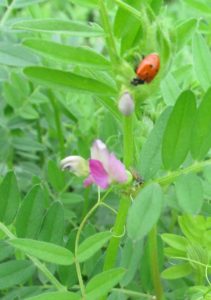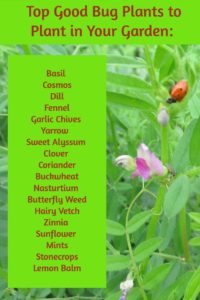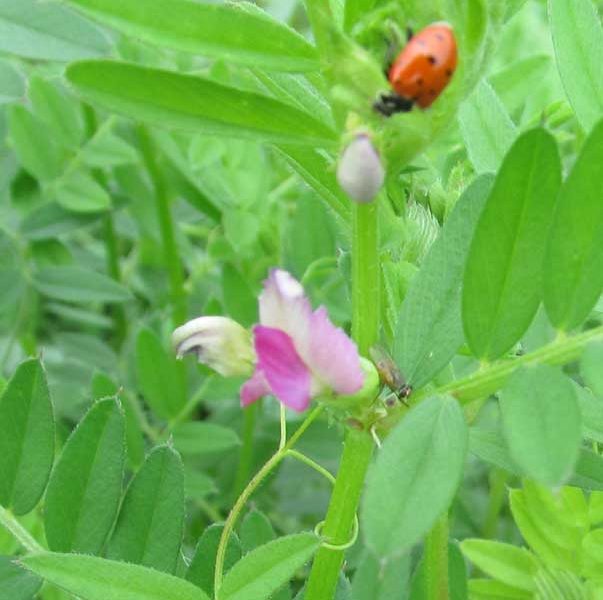
As spring goes into full swing, gardeners everywhere are gearing up to plant their gardens and are getting ready to do whatever it takes to protect what they’ve planted from the hungry hoards of bugs. Many are working to grow their vegetables with organic methods, and one of the best ways to do that is to make your garden a haven for the good bugs. For every bad bug out there, there is a good bug laying in wait to eat it. All we need to do is make a comfortable place for them to thrive. Good bugs include green lacewings, lady beetles, ground beetles, spiders, praying mantis, parasitic wasps, and bees,
Most good bugs when they’re not eating bad bugs are living off of nectar and pollen from flowers. Providing a wide variety of flowers that are in bloom throughout the summer is the first step to getting these good guys to hang around. Planting the right kinds of flowers is important, good bugs as a group have tiny mouth parts so their favorite flowers must have easy access to pollen and nectar. These plants provide not only food, but shelter for them to hide and breed. Try to intersperse the plants within your rows or beds so they’ll be close enough to feed on the bad bugs or plant a wide band of them around your garden. It takes lots of area for these guys to live in so plan on at least 1/3 of your garden to be planted in good bug habitat plants. Curb the desire to mow down weeds around your gardens; it’s within these weeds that they’ll be able to survive when you’ve given up gardening in the heat of the year.

Mulching your garden beds will provide a good place for the ground dwelling group of good bugs. They’ll also need plenty of water to drink, so if you’re not watering your garden with overhead water, then provide some shallow pans with pebbles in them so they won’t drown. Use stepping stones on garden paths. Many insects love to hide under boards or flat stones when they aren’t hunting pests.
Try to use as little chemicals as possible in your gardens; broad spectrum insecticides can wipe out your entire good bug population overnight. Use Ultra-fine horticultural oil or insecticidal soaps to control the piercing-sucking insects such as aphids, whitefly, scale and mealy bug. There will be times when you’ll have to hand squash a few bugs to even the odds.
 And lastly, learn the art of patience. It often takes awhile for the correct balance to be reached. Not panicking when you see an out break of bad bugs is one of the hardest lessons a gardener must learn. Take some time and learn to identify your good bugs in their various stages. The Missouri Botanical  Gardens website has some great pictures to help you ID the beneficial insects in your garden. Get a hand held magnifying glass and watch the progress; it will help you learn what good bugs you’ve got. The greatest thing about gardening with good bugs is that it usually gets easier each year. As your good bug population builds, they’ll more quickly take care of the pest problems for you, and your garden will become healthier and a safer place to garden in because of it.
And lastly, learn the art of patience. It often takes awhile for the correct balance to be reached. Not panicking when you see an out break of bad bugs is one of the hardest lessons a gardener must learn. Take some time and learn to identify your good bugs in their various stages. The Missouri Botanical  Gardens website has some great pictures to help you ID the beneficial insects in your garden. Get a hand held magnifying glass and watch the progress; it will help you learn what good bugs you’ve got. The greatest thing about gardening with good bugs is that it usually gets easier each year. As your good bug population builds, they’ll more quickly take care of the pest problems for you, and your garden will become healthier and a safer place to garden in because of it.

